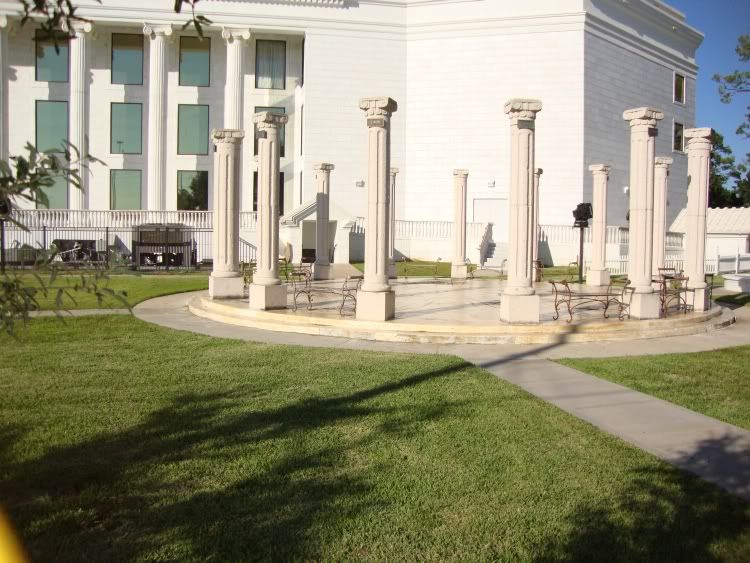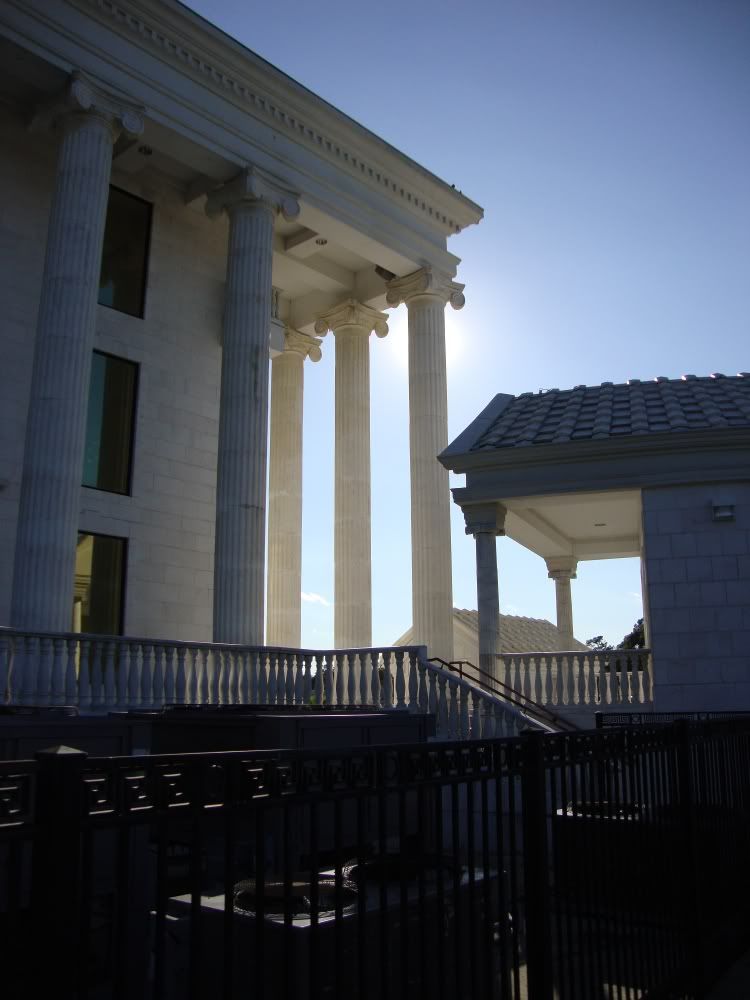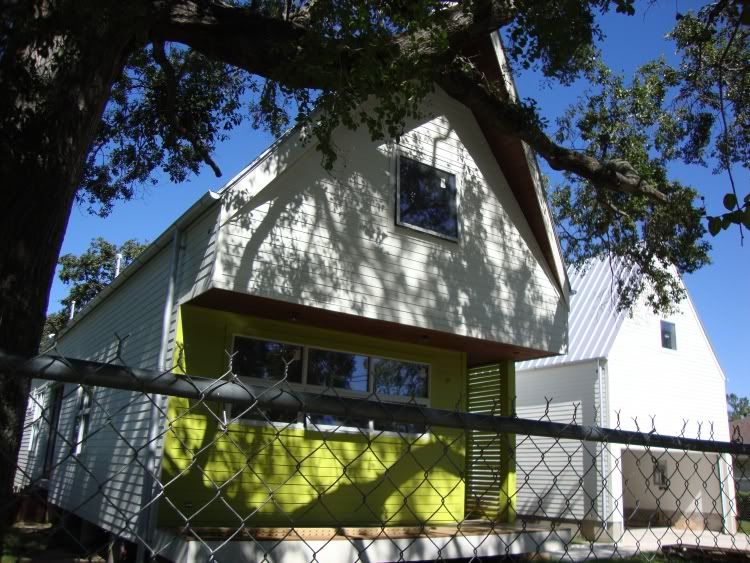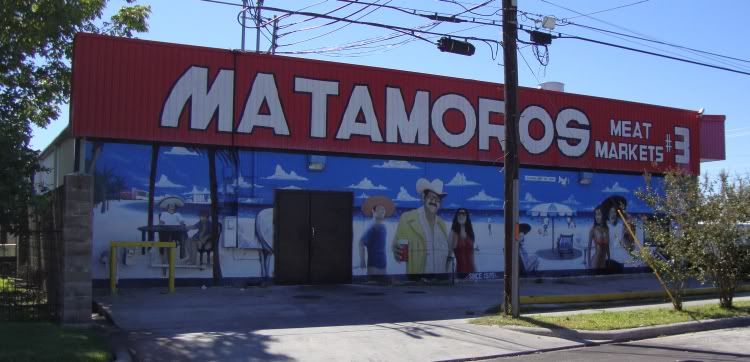
Robert W. Boyd
-
Posts
20 -
Joined
-
Last visited
-
Days Won
2
Content Type
Profiles
Forums
Events
Posts posted by Robert W. Boyd
-
-
I really wish they'd get the Bayou City Arts Festival out of Memorial Park. It's a terrible location for such a big event. There's no parking and only two ways into and out of the park.
I went jogging this afternoon and the park was getting trashed.
I really hated seeing people have such total disregard for the park (parking on lawns/fields, not putting their trash in the trashcans, smoking and walking 6 abreast on the trail, etc...).
I went to the festival and didn't notice people parking on the grass and generally saw a bunch of well-behaved arts-n-crafts browsers. I assume (but don't know for sure) that most of the attendees came by the free shuttle buses provided. One from Northwest mall (I took that one) and one from downtown somewhere.
Sorry we spoiled your jog.
-
Has anyone seen the Fountains at Memorial City? These are new condos going up on Gaylord right next door to the Cemex building just east of Memorial City. They are being developed by MetroNational which pretty much owns everything from Bunker Hill to Memorial Hermann (the president of MetroNational has his office in the "crown" of the Memorial Hermann Tower).
Anyway, there is nothing particularly special about The Fountains except that it is unusual for high rise condos to be built so far out. But the parking garage is surprisingly a thing of beauty! (Photos here.) The have put a mural on the side of trees with a neat effect of the more distant trees being paler in the haze. Because there are real trees in the parking lot in front (north) of the mural, it gives it a curious trompe l'oeil effect. Worth checking out!
-
But actually, I'd tend to think that the most dangerous routes would be inner-city. Modern major thoroughfares and their intersections are planned by transportation engineers to have unobstructed views, wider and multiple lanes, gradual curves, shallower grades, good sight lines, and fewer intersections that are more frequently signalized. Modern roads also use better paving techniques, meaning that potholes and other flaws are less common.
This isn't true, according to what few stats there are about Houston bike accidents. The problem with suburban streets, especially arterials, are manifold. The obvious one is speed--speed limits are higher in the burbs, and even when they aren't, heavier traffic in the city keeps speeds lower. Another problem is inattentional blindness. There are more cyclists in the city, therefore drivers are more accustomed to actively seeing them. Out in the burbs, people don't notice bikers as much because they aren't trained by experience to notice them.
Consequently, it appears that the further you go out from the center of Houston, the more bike fatalities there are, according to research. But htis research has been done in a pretty haphazard way. I would like to see some serious, rigorous statistical research done on this, and would also like better recording of the details of bike accidents (fatal and non-fatal) by the police.
-
There's a certain group of people around HAIF who always dream up ways to make Houston a superior, world-class city, comparing it to many other American cities: Los Angeles, Chicago, Atlanta, Austin, and Dallas.
But as much as we'd like that to come true, consider this: when you look at Texas as a whole, you get four fine cities, all wrapped up in a triangular interstate system. Can you imagine New York without NYC? Or Massachusetts without Boston? Or Illinois without Chicago? Or Georgia without Atlanta? Of course not, because beyond their Flagship City™, they have nothing to offer. But in Texas, we not only have Houston, but San Antonio, Dallas-Fort Worth, and Austin. And when you throw in the other interstate cities (Waco, for example) and other cities not terribly away from the perimeter of the triangle (College Station-Bryan) you have a full house.
So if you feel like Houston is not big enough or grand enough, take a look at Texas as a whole, a world-class state in itself.
This is an amazingly silly statement. Texas is a large state--of course there's lots of stuff outside of Houston. But the same is true in each of the other states you mention and casually dismiss. I lived in western Massachusetts for several years and still miss its beauty, its colleges (Williams, Amherst, Smith, Mount Holyoke, U. Mass, and Hampshire) and the many excellent cultural events they had, Tanglewood, Mass MOCA, the freaking Berkshires in autumn, etc. (I could do without Springfield, though. But I could say the same about Waco as well, heh heh.)And that's just the western, more rural part of what is a very small state, after all. Most states have a lot to offer outside their major cities. I hardly think Texas is inherently superior (or worse)--its size means that it has more stuff. But when you think about how far apart Houston, Dallas, Austin, and San Antonio are (not to mention El Paso), imagine what you can reach from Boston within a similar radius? (Boston is closer to NYC than Houston is to Dallas, for example.) I'm not saying that you shouldn't be proud of Texas--you just don't need to run down other states to do so.
-
 1
1
-
-
Tall buildings are monuments unto the phallus; they serve no noble purpose.
Depends on whose phallus we're talking about here!
-
I was not familiar with the work of Peter Moskos, but I’ll check it out. This is exactly the sort of thing that’s been lost in the discussions of urbanists.
Most urbanists agree that Houston will get more dense in the next 25 years. It'd be very interesting to see if we put cops back on foot as our City rediscovers density.
Peter Moskos suggested that beat cops might help reduce crime in densely populated areas, but worried that there hadn't been enough study. On his blog, he announces that very interesting and hopeful research has been done:
Foot patrol has worked in New York (it would work better without quotas). And now there's some research by Jerry Ratcliffe coming out of Philadelphia. As reported in the Philadelphia Inquirer:
Temple's study, which covered three months, showed a 22 percent drop in crime in areas covered by the foot patrols. Arrests were up 13 percent.
As in other major cities, crime has been on a decline in Philadelphia. Violent crime - down in all but three districts - dropped 7 percent citywide in 2009 compared with 2007, with homicide down 23 percent and aggravated assault down 4 percent.
-
Sears is closing at Greenspoint in May 2010.
And I thought Greenspoint was going back uphill.

It's a bad time to be a mall. Especially one that was already struggling.
I work just down the street from the mall, and I wish it were better. I have shopped at Macy's, but the mall interior struck me as underlit and depressing (I haven't been in it for about a year, though--it may have improved).
-
I can't speak to what "urbanists" have said about crime, but I can refer to what Peter Moskos said in his great book Cop in the Hood.
He said that the rise of policing from cars and 9-11 have turned police from being proactive to reactive. No one responding to a 9-11 call ever stops a crime (unlike 9-11 calls for fires or medical emergencies, in which lives are often saved). The cop on the beat had more of a relationship with the neighborhood, was a visible presence, heard things from folks, etc. (This was also pointed out by Jane Jacobs, of course.)
Moskos was writing about Baltimore in particular, and Baltimore is pretty "walkable", especially compared to Houston. Beat cops and even bike cops are just less viable in most of Houston because of its sprawled out nature. (And, Moskos added, cops hate being made to walk the beat--in Baltimore, it was seen as punishment.)
But in walkable (or at least bikeable) areas of Houston--i.e., ones that adhere more to "urbanist" concepts--beat cops on foot or bikes make more sense and would possibly have a stronger deterrent effect.
The main issue would be how to get the cops on board. If your choice is to be in a safe, air-conditioned car or to be on foot or on a bike in the blazing heat, what would you choose? Moskos's suggested solution was to pay beat cops more. After all, the operation of police cars is expensive, so every cop not in a police car is saving the department money--use that savings as incentive pay to get cops out of their cars and onto the street.
Again, this is not remotely practical for most of Houston. But in certain neighborhoods with highly urban characteristics, I think it would help.
-
Riding on sidewalks isn't safe for pedestrians and I don't think gives huge advantages to bikers. I'm not aware of anywhere where that is legal, for good reason.
As far as I know, riding on sidewalks is completely legal except in "business districts".
Section 45-302No person shall ride a bicycle upon a sidewalk in the City of Houston within a business district or where prohibited by sign. A business district is defined as "the territory contiguous to and including a roadway when, within 600 feet along such roadway, there are buildings in use for business or industrial purpose which occupy 300 feet collectively on both sides of the roadway".
-
According to the Chron, BCM has decided to go it alone. (For now.)
If it was Baylor U. that killed the deal with Rice (which is what I have heard), BCM may have had pretty bad feelings towards Baylor, to say the least. BCM also had to wonder what Baylor was bringing to the table. Anything?
While I have nothing at all against Baylor U and have known many people over the years who attended or were alums of that school, it seems Baylor acted pretty poorly in this matter, and as a result are ending up with nothing.
-
I spoke with a professor at Rice who was sort of in a position to know what happened, and he gave me his version of the story of the failure of the Rice-BCM talks and the part in that failure played by Baylor University (a BIG part).
At the risk of seeming like a complete blog whore, I'm going to link to my blog post about it.
In short, it looks like Baylor U. played a sneaky and decidedly unchristian waiting game, letting Rice do a lot of heavy lifting and then musciling them aside once the bucks were all lined up.
-
-
The question of which areas have the most crime (or highest crime rate) is tricky to answer.
1) total crime versus crime rate. Different areas of Houston have different population densities. Also, different neighborhoods are different sizes. So if you add up all the crimes in a big neighborhood and compare that to a small neighborhood, it may make the big neighborhood appear more dangerous when in fact the crime rates are identical or even even greater in the small neighborhood. Consequently, I think one should look at crime rates versus total number of crimes. (That, of course, makes the task harder.)
2) What is the purpose of figuring out the crime rate neighborhood by neighborhood (or zip-code by zip-code, or police beat by police beat)? If it is to figure out the chance that you, as a resident in, worker in, or visitor of a particular location are in greater or lesser danger of crime, then you should look at crimes that happen to random people. So property crimes would be the best measure.
3) For this reason, murder rates are probably not the best way to look at crime in a particular area. For the most part, murders aren't random. Acquaintances (particularly spouses and significant others) are common murder victims. People involved in criminal activities (drug dealers) are often victims. It may be that there is a strong correlation between the murder rate and other crime rates. But I think it is better to look at other crimes than murder.
I would definitely like to see a crime map of Houston with crime rates for each census tract (which are divisions used by the census that are smaller than zipcodes). I would like it to include all crimes, and see versions for more specific crimes (assault, burglary, car burglary, robbery, etc.). That would give you a really good idea of which areas are the safest and most dangerous in Houston, and probably would contain a few surprises.
-
 2
2
-
-
All of you interested in The House of the Century are going to kick yourselves--Chip Lord and Curtis Schreier (two of the surviving founders of Ant Farm) were just in town for the Cinema Arts Festival, which showed a documentary about Ant Farm called What If Why Not. Marilyn Oshman was at the screening and they all answered questions.
This is a house that should definitely be renovated and preserved and opened to the public!
-
LOL, I was waiting for this post. There was an op-ed piece three weeks ago (which I guess you missed, or at least muttered sulkily as you read it) in which three BIOMEDICAL faculty (not four Arts faculty), and one arts for that matter, supported the merger. Oh and Rice's President too, forgot about him. Apparently four years at Rice has taught you just to see what you want to see and hear what you want to hear. Seems like a waste of money to me.
You'll note how I didn't lurch on to HAIF when that editorial was published, as you have done with this one, because I know that everyone's mind is pretty much made up on this merger, yours and mine included, and in doing so I would have achieved little beyond burdening the Internet with more pointless bytes of information. As you have done.
Actually, I have a BA and an MBA from Rice, so it's more like 6 years--not that it's relevant. I did see the earlier editorial you mention--I thought it added nothing to the debate. It was a rehashing of the synergies argument with no evidence to back up the claims. As for knowing that "everyone's mind is pretty much made up" on this merger, mine wasn't. When the merger talks were announced last year, I was in favor of it (based on what I knew at the time). Over the course of the past year, as BCM's financial problems have been publicly revealed and have worsened, I have changed my mind. I am basing my opinion on observable facts (you can look at both Rice's and BCM's financial statements on line, and BCM's deteriorating credit rating has been reported by Bloomberg). Unlike you, I am not forming an opinion based on the messenger. (By the way, three of the faculty members who signed that editorial came from science and engineering disciplines--not that I think that matters.) Furthermore, I am still willing to change my mind. If someone from the pro-merger side will explain why my concerns over BCM's finances are unwarranted, I will listen. Believe me when I say that I have been waiting for someone to deal with this issue for a while now--but all I hear are more talk about "synergy" and "prestige" and Rice's duty to prop up an important Houston institution, BCM.
I have not forgotten Rice president Leebron. On the contrary, I think he is an empire builder who is willing to take excessive risks in exchange for growing Rice. This is demonstrated by his huge construction programs on campus, and especially by the Bioscience Collaborative Research facility. This facility was paid for with debt (an approach I strongly disapprove of) and was intended to be the platform for increased collaborative research with other TMC institutions--indeed, it was meant to obviate the need for a medical school. One can agree with his growth strategy or not. I think Leebron is acting recklessly, as so many corporate CEOs have done in the past.
Maybe my publicizing this information won't change anyone's mind. If so, the only time I wasted was my own. I'm sure the internet can handle the "burden"--it seems pretty robust in that regard. But when other people started pointing out BCM's problems, it awakened doubts in my mind. My mind was changed on this issue by new information. Perhaps not everyone's mind is made up, as you claim.
-
I took some photos of this amazing and unusual church complex.

That's on the south side of the church, in front of the small(er) building in the southeast corner.

The front of the main building.

You can see more on my blog.
-
 1
1
-
-
That whole area around Brays Bayou (the park, cemetary, convent, & surrounding neighborhoods) is really an unusually beautiful piece of Houston. It always amazes me when I spot it on the GoogleEarth aerials. So much green. Surprises me about those dogs in Forest Park, sure they would not have stayed very long, it's usually watched pretty heavily. I always see workers on the grounds when I visit. A pack of dogs...could be bad for the ducks in the pond, as well as people. Good work on the website.
Thanks. Yeah, the mean dogs were kind of a shocker. I assume you are right--it's not like this is an abandoned cemetery--it is well maintained and heavily visited! I guess I just had bad luck.
-
I had a day off from work today, so I took advantage of the beautiful weather to check out Lindale Park, which straddles Irvington between the North Loop and Cavalcade.
http://robertwboyd.blogspot.com/2009/10/houston-streets-17-lindale-park.html
Here's a beautiful house designed by Brett Zamore that is going up there.

And here is the side of the Matamoros Meat Market on Irvington.

-
I hit these two neighborhoods (one for the living, and one for the dead) on my new bicycle, took photos, talked to a resident (on the "living" side of Brays Bayou), was chased by dogs, and wrote about it on my blog.
http://robertwboyd.blogspot.com/2009/10/houston-streets-16-idylwood.html#links
http://i717.photobucket.com/albums/ww172/RWBoyd_2009/ForestParkHoustonSkyline.jpg
One of the tombstones in Forest Park.


What's Been Up With Houston Police Department Lately
in Crime and Punishment
Posted
Yeah, I see the Falun Gong people out front protesting/praying all the time. If the police didn't know it was the consulate, they should have.